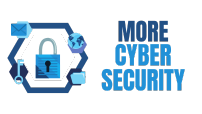With this guide from More Cybersecurity, you can better understand multi-factor authentication and how it can protect your business – and your staff – from today’s cyber threats.

Multi-factor authentication usage is growing fast.
But you may be wondering: “What exactly is this multi-factor authentication stuff?”
And why do you need to care?
LastPass shows that, between 2017 and 2021, usage has increased by 51% – that's because it provides a huge boost in security and massively reduces the threat of data breaches or financial loss through cyberattacks. Let's dive into a guide from More Cybersecurity!
Get all the details at https://morecybersecurity.com/
Most people rely on passwords as their primary defense against cyber threats. But with today's sophisticated hacking attempts, passwords alone often fall short. This More Cybersecurity guide focuses on how multi-factor authentication can strengthen security in all areas of your digital life.
"Picture this," Scott Hall, the author, says. "You're about to enter a top-secret facility, but instead of just one guard verifying your identity, there's an entire team working together. That's MFA in action - multiple layers of protection ensuring only you have access to your accounts."
More Cybersecurity research shows that weak and stolen passwords cause 81% of hacking-related breaches. MFA adds an extra layer of protection by requiring not only a password but also an additional verification method when signing in. This could include a unique one-time code sent via text, a fingerprint scan, or facial recognition.
If you issue workplace smartphones, tablets, or laptops, biometric MFA options - such as fingerprints or facial recognition - offer further security steps. Applying MFA across all your workplace's devices would limit the damage if any single device were to get lost or stolen.
When it comes to financial transactions, additional protection is essential. By requiring a unique verification code sent to the account owner's smartphone, those with ill intent wouldn’t be able to initiate transfers without also stealing the associated mobile device. This protects your company from any attackers attempting to use compromised passwords to steal funds or sensitive data.
Implementing MFA across an organization can present challenges related to user experience and rollout. The guide covers the best practices for choosing methods that balance security and convenience for employees. By following the strategies outlined, you can deploy MFA securely without disrupting workflows.
Concluding the guide, Scott Hall adds: "Don't wait for that nightmare scenario to become a reality: take action now. You can implement multi-factor authentication to keep your digital life safe and secure."
If you want to make sure your business is protected, start with this guide. You can thank me later!
Check out https://morecybersecurity.com/what-is-multi-factor-authentication-and-why-it-matters/ for any extra info you need!
